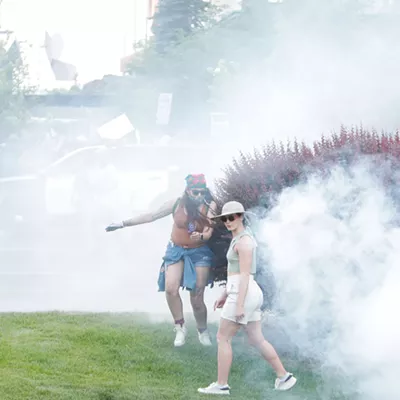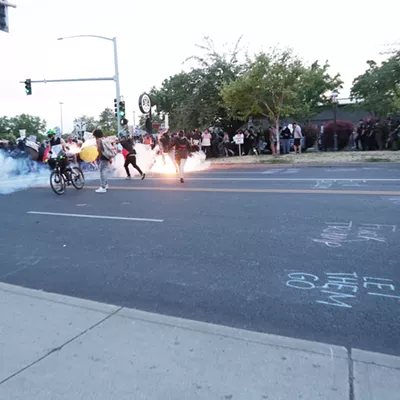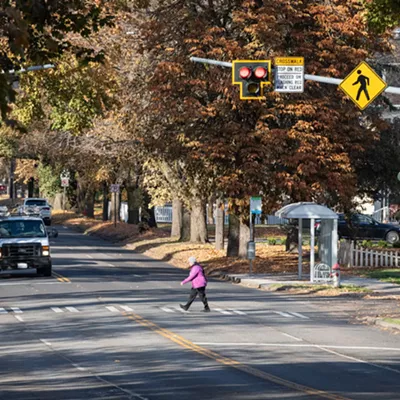The first pitch of the Spokane Indians' home opener is scheduled for 6:30 pm Sunday, give or take a final heart attack or two for General Manager Paul Barbeau. For Barbeau, the first of 38 games at Avista Stadium represents the first of 38 opportunities to treat up to 7,300 guests to a great night of entertainment in his home away from home.
Or, not. Twelve months of hard work behind the scenes by Barbeau and his staff go into each and every Indians home game, but their best intentions can be waylaid by bad weather, bad games or bad luck.
Fortunately for local baseball supporters, the Indians send their fans home happy far more often than not. The Indians are one of the crown jewels of short-season (play begins in late June) minor league baseball -- a money-making machine that takes advantage of one of the largest markets and stadiums in short-season ball to rank among the classification's attendance leaders year after year after year.
The Northwest League season lasts just 12 weeks, but the Indians' office is open year-round. Season tickets, group tickets, scoreboard signs, outfield signs, program ads, Internet ads, sponsorship sales, radio sales, concessions purchases, souvenir purchases ... most of that work is done when baseball is the last thing on the minds of most Inland Northwest residents.
After a brief respite at the end of each season -- "We just kind of decompress for a few weeks," Barbeau says with a smile -- the Indians' dozen or so year-round employees begin preparing in earnest for the season to follow. Four full-time seasonal employees are added in the spring, and up to 160 more workers show up on game days.
Fans gobble up more than 50,000 beers, hot dogs and sodas every summer at Avista. Crowds typically range from 4,000 to 6,000. Barbeau says annual expenses for the Indians exceed $1 million, but the franchise has turned a profit every year since former minor league player Bobby Brett and his brothers (including Hall of Fame third baseman George) spearheaded the ownership group that bought the team in 1985.
Barbeau says stable ownership has been instrumental in maintaining high levels of season-ticket and sponsorship renewals. Lower-level box seats have sold out for years as season tickets. This year, for the first time, the Indians sold every sponsorship/advertisement/commercial/promotion available. Clearly, the Indians is an organization that businesses want to be associated with.
Perhaps the most amazing aspect of the Indians' success story is that they've won over a town that, for years, attached much of its sporting identity to Spokane's glory days as members of the Class AAA Pacific Coast League. Triple-A is the highest of the six classifications of the minor leagues. The Northwest League is one of two short-season Class A leagues, one small step above the five Rookie-class leagues (three in the United States) that line the bottom of the minor league talent barrel.
Spokane once competed in the PCL with such current major league locales as Seattle, San Diego and Dallas-Fort Worth. Today, virtually all Triple-A markets dwarf Spokane in size, and Triple-A franchise costs far exceed those during Spokane's PCL days (1958-71 and 1973-82).
As members of the Northwest League, the Indians avoid many of the costs associated with higher classifications. Also, with approximately half as many home games, the Indians no longer have to play early-season games in front of a few hundred fr-fr-frozen fans in April and May.
True, Spokane rosters no longer include players on the verge of major league stardom like Frank Howard, Tommy Davis, Willie Davis, Steve Garvey, Ron Cey, Bill Madlock, Maury Wills, etc. Most Northwest League players, 22 or younger, are first- or second-year pros making $850 a month. The Indians once housed their players in hotels or apartments, but players now live with local families for little or no rent.
"The players enjoy it," Barbeau says, "because they can live in a family situation and not worry about renting an apartment."
The Indians pay for charter buses (and the occasional plane trip) and hotels for all away games, but the parent Texas Rangers pay the salaries of players, managers, coaches and trainers. The Rangers cover 75 percent of the cost of the hundreds of bats and thousands of balls used each summer; the Indians provide uniforms and field maintenance. Five percent of all minor league ticket sales go into a general fund used by major league teams to help fund minor league operations.
Minor league baseball drew a record 46.4 millions fans last year (counting five independent leagues whose teams operate without major league affiliations). Like most minor league teams, the Indians provide a bevy of promotions -- fireworks, concerts, contests, giveaways, etc. -- to augment the on-field action, all for a fraction of the cost of attending a major league game.
"The best part of my job is opening the gates to the public at 5:30 on game days," says Barbeau, a Georgetown University alum who has been GM the past eight of his 11 years with the Indians. "I love taking care of our fans and making sure they saw a great show and got more than their worth for the money and want to come back with their family."
The Spokane Indians, who opened the Northwest League season Tuesday in Eugene, make their home debut Sunday at 6:30 pm versus Everett. The AquaSox, an affiliate of the Seattle Mariners, will provide the opposition for Spokane's opening five-game home stand. KJRB (790 AM) broadcasts all 76 Indians games live. All games at Avista Stadium start at 6:30 pm (except for 3:30 pm on Tuesday, Aug. 9). Tickets are priced at $8 and $5, with $1 discounts available on the $5 tickets for seniors, military personnel with proper identification and children 12 and under. Tickets may be ordered by phone at 535-2922. Avista Stadium is on the Spokane Interstate Fairgrounds at Broadway Avenue and Havana Street.
















